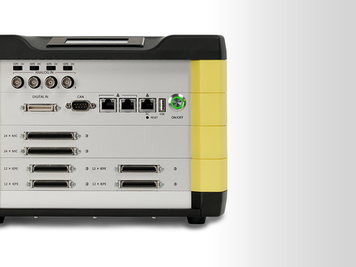Deconvolution methods like HDR (in literature also called CLEAN-T) and CLEAN-SC are frequently applied to improve the quality of sound-source localization (dynamic and main lobe width).
The example of this FAQ presents an acoustic map of five simulated sound sources which are excited by white noise at varying sound pressure levels of 90 dB, 80 dB, 70 dB, 60 dB and 50 dB. The proper application of CLEAN-T or CLEAN-SC makes it possible to localize all five sound sources at their correct positions. Figure 1 shows an example of the application of HDR.
CLEAN-T und CLEAN-SC are algorithms based on the standard beamforming method. They require that all regulations relevant for the generation of a precise acoustic map are kept.
To generate an accurate acoustic map, the following parameters are especially relevant:
- Distance between the acoustic array and the measurement object (focus),
- Number of pixels per length unit (resolution) and
- Selected image extract
Should these parameters be not close enough to reality, the algorithm is unable to reconstruct the sound sources but erroneously subtracts them from the summed-up signal. The figures 2, 3 and 4 show sound maps with focus, resolution and an image extract not optimally chosen for the illustration. Clear deviations from the best possible acoustic map in Figure 1 are visible. In Figure 4, sources were found at the margin because the real sources were not covered by the selected image extract.








